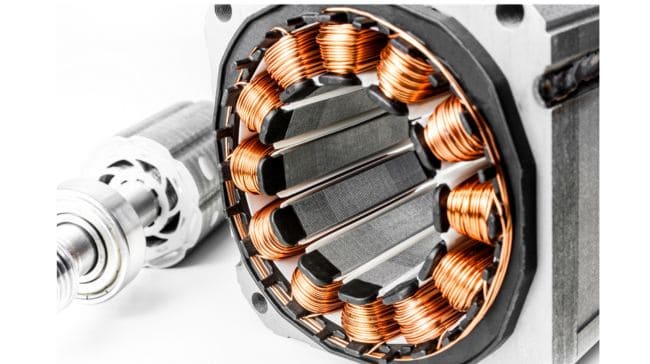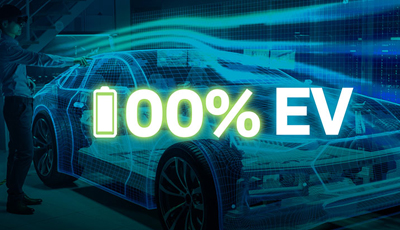The availability of user-friendly public charging infrastructure is one of the key requirements for accelerating the adoption of electric vehicles in India. In this regard, the government of India has taken several initiatives to expedite the development of public charging infrastructure across the country. The present article is an attempt to discuss in detail the developments happening in the India EV charging infrastructure market.
Developments in India
As per SMEV and different media reports, India had installed 1800 public charging points including fleet segment by end of FY 2020-21.
The development of public charging infrastructure in India started gaining momentum slowly after the implementation of phase 2 of FAME India scheme in 2019-20. The government allocated a much higher budget of INR 1000 Crore under phase-2 of the scheme as compared to INR 43 crore spent under phase-1 of scheme for the development of 520 charging stations.
Under Phase II, the department of Heavy Industries (DHI) has already sanctioned 2,877 charging stations till date in 68 cities across 25 states/ UT’s with a budget support of INR 500 Crore. Further, in December 2020, DHI floated an EOI for development of over 1500 charging stations on highways.
Apart from FAME, various state governments are also offering additional incentives for the development of charging infrastructure under their EV policies. Till date, 20+ states have already notified their EV policies including the draft policies.
In India, the Ministry of Power (MoP), has been playing a key role in expediting the development of charging infrastructure and has taken several key initiatives till date. For e.g. In 2018, MoP notified that the EV charging will be treated as a service and no separate licensee would be required for setting up a public charging infrastructure. This key policy push from MoP opened the market for private players interested in operating and setting up the charging infrastructure, as before that, only distribution companies were allowed to sell the electricity as per Electricity Act 2003.
Further, in 2018, MoP came up with standards and guidelines for rolling out the public charging infrastructure at PAN India level. Later, in 2019, MoP notified the revised guidelines after considering the suggestions from industry stakeholders on certain mandatory requirements for e.g., the initial guidelines mandated to install all type of chargers in a PCS notified in the guidelines. Industry had a viewpoint that mandating all type of chargers in a single PCS is very restrictive and uncompetitive as this would increase the CAPEX substantially without the infrastructure being utilized in absence of requisite vehicles, which will finally lead to higher price to end consumer. Hence, let the operator decide what type of infrastructure he wants to install and operate. For e.g., an operator of 2-wheeler segment should not be forced to serve to 4- wheeler category.
The key highlights of the revised guidelines were following:
- At least one charging station should be available in a grid of 3km x 3km.
- One charging station to be setup every 25km on both side of highways/ roads.
- At least 1 fast charging station at every 100 km’s on both side of road/highways in case of long range EV’s (trucks & buses).
- Setting up of Public Charging Station (PCS) shall be a de-licensed activity and any individual/entity is free to setup public charging stations provided that such stations meet the technical as well as the performance standards and protocols defined in the guidelines as well as any further norms/ standards/specifications laid down by MoP and central Electricity Authority (CEA) from time to time.
- Any Charging Station/ Chain of Charging Stations may also obtain electricity from any generation company through open access.
- In terms of national plan for roll out of EV charging stations, the government in Phase-1 (1-3 years), which will be of up to 3 years, will prioritize installations in all mega cities with population of 4 million plus, along with all existing expressways and highways connected to these megacities. In Phase-2 (3-5 years), the government will focus on the big cities like State capitals, UT Headquarters, and the highways connected to these cities.
Key Minimum Requirements for Setting Up the PCS:
- Public Charging Stations may contain one or more, or any combination of chargers from a list of the specified EVSE and connector types, mentioned below.
|
Charger Type |
Charger Connectors |
Rated Voltage (V) |
No. of Connector Guns (CG) |
Charging Vehicle Type |
|
Fast |
CCS (min 50kW) |
200 -750 or higher |
1 CG |
4W |
|
CHAdeMO (min 50kW) |
200 -500 or higher |
1 CG |
4W |
|
|
Type-2 AC (min 22kW) |
380-415 |
1 CG |
4W, 3W, 2W |
|
|
Slow/ Moderate |
Bharat DC-001 (15kW) |
48 |
1 CG |
4W, 3W, 2W |
|
Bharat DC-001 (15kW) |
72 or higher |
1 CG |
4W |
|
|
Bharat Ac-001 (10kW) |
230 |
3 CG of 3.3 kW each |
4W, 3W, 2W |
|
|
*In addition, any other fast/slow/moderate charger as per approved DST/BIS standards whenever notified. Note: Type-2 AC is capable of charging e-2W/3W with the provision of adopter. |
||||
- Charging station for e-2W/3W shall be free to install any other charger other than those specified in the list mentioned above, subject to compliance of technical & safety standards as laid down by CEA.
- Every public charging station should have an exclusive transformer with all related substation equipment which includes plug-in nozzles, 33/11 kV line/cables (for metering and termination purposes), and the circuit breakers, the form of the safety equipment.
- The electric vehicle supply equipment (EVSE) should be type tested by an agency/lab accredited by NABL.
- Further, the PCS should be tied up with at least one online Network Service Providers (NSP) to enable advance remote/online booking of charging slots by EV owners. Such online information to EV owners should also include information regarding location, types, and number of chargers installed/ available etc.
- In case of fast charging station, the PCS should also have liquid cooled cables to charge fluid cooled batteries.
- Finally, every PCS shall be operational only after inspection and a “clearance certificate” issued by the electrical inspector designated by the local distribution company.
- As far as charging infrastructure for long range EV’s (trucks & buses) is concerned, the PCS should have at least 2 chargers of minimum 100kW (200 -750V or higher), each of different specification (CCS/ CHAdeMO or any fast charger as approved by DST/BIS) with single connector gun along with the appropriate liquid cooled cables for high-speed charging facility.
It is important to note that the above-mentioned minimum requirement guidelines are not applicable for any private charging points for individual EV owners, which means if the station is not open for public use, the MoP guidelines will not be applicable to private individual owners/ captive charging infrastructure for 100% internal use for a company’s owned/lease fleet of vehicles.
Another important point highlighted in the guideline was related to service charges at PCS. In case of charging stations installed with government incentives, state nodal agency/ state government/ appropriate commission shall fix the ceiling of the service charges to be charged by such charging station owners.
Further in 2020, MoP again made key amendments under the guidelines and notified that:
- The tariff for supply of electricity to EV PCS shall be determined by the appropriate commission. The applicable tariff shall not be more than the average cost of supply plus 15% unless otherwise specified by the tariff policy.
- The definition of battery swapping station was included under the guidelines.
Apart from the key initiatives taken by MoP, the ministry of Housing and Urban Affairs (MoHUA) has also made amendment in Model Building Byelaws (MBBL) 2016 to include the provision of EV charging in buildings. The key points under the amendment were following:
- 20% of all vehicles holding capacity/ parking capacity at the premise of a building shall be reserved for the charging of EVs.
- The building premises will have to have an additional power load, equivalent to the power required for all charging points to be operated simultaneously, with a safety factor of 1.25.
- The amendments are applicable to all buildings except independent residences.
Way Forward
Overall, in India, the development of charging infrastructure is gaining momentum slowly as the demand of electric vehicles have started rising again after the amendments made under FAME-2 scheme in 2021 and due to additional incentives offered by various states under EV policies. The incentives applicable under FAME-2 scheme for charging infrastructure are linked with the MoP guidelines. So, any entity/ individual interested in setting up the public charging stations, shall have to follow the MoP guidelines. MoP has designated Bureau of Energy Efficiency (BEE) as the nodal agency for the roll-out of charging stations across the country.
Global Market Overview
Globally, with rise in demand of electric vehicles, the development of public charging infrastructure has also grown significantly. As per the Bloomberg, China has currently one charging point for every 5 electric vehicles, whereas, USA has one charging point for every 20 EV’s. In terms of installed charging points, China is currently leading the market with over 9,23,000 public charging points followed by European Union having 2,25,000 points followed by US with 96,500 public charging ports by end of 2020.
References:
https://powermin.gov.in/sites/default/files/uploads/Revised_MoP_Guidelines_01_10_2019.pdf
https://powermin.gov.in/sites/default/files/uploads/Amendment_in_Revised_Guidelines.pdf
https://evadoption.com/ev-charging-stations-statistics/













